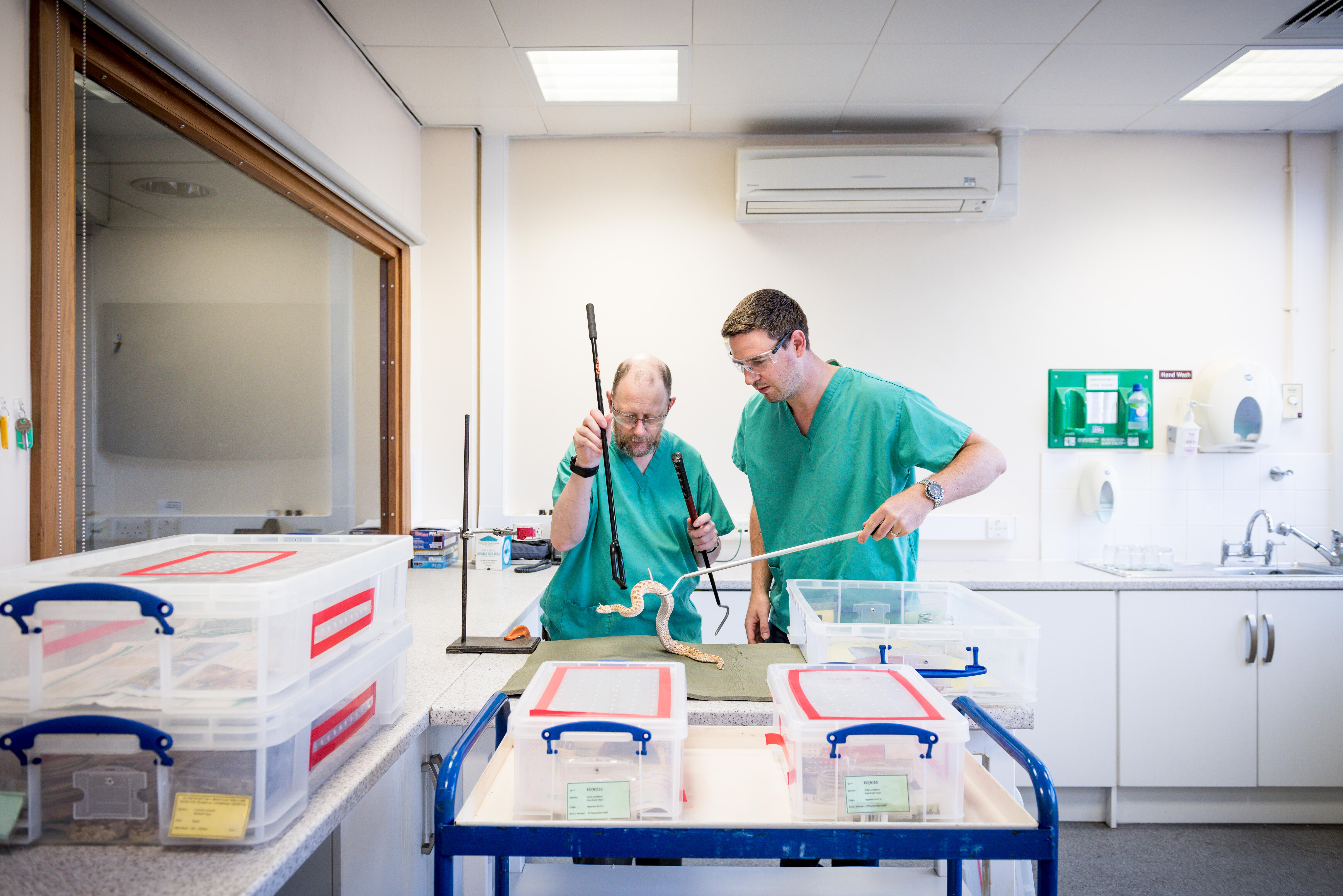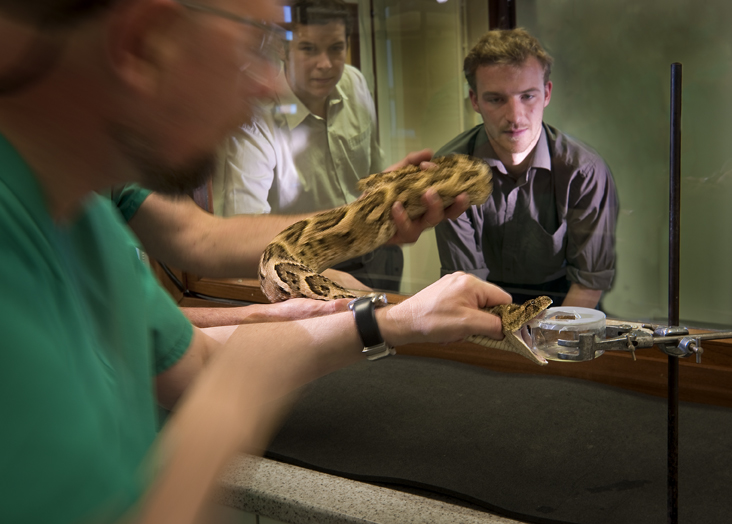
Since snakebite was added to the World Health Organisation (WHO) list of Neglected Tropical Diseases (NTDs) in June 2017, the problem – which kills over 100,000 people globally, and leaves up to 300,000 which permanent physical disabilities or disfigurements each year - has begun to receive some urgently required global attention. LSTM - the home of the Alistair Reid Venom Research Unit which houses the largest and most diverse collection of venomous snakes in the UK and is a centre for world-leading research on snakebite envenoming - is proud to be at the centre of this work.
At the time of the WHO announcement last year, Professor Robert Harrison, Head of the Alistair Reid Unit, said “This is an important and very welcome decision by the WHO, and adds empowering impetus to WHO’s 2016 initiative to improve the quality of antivenoms to treat snakebite victims in sub-Saharan Africa.” Since snakebite was added to the list just over a year ago, plenty has been happening here at LSTM and on projects we’re involved with around the world.

In July 2017, the National Institute for Health Research (NIHR) awarded £2 million to the newly formed African Snakebite Research Group, led by LSTM’s Professor Robert Harrison. This ground-breaking funding was a major step in the investment in this under-researched and under-resourced high mortality/morbidity condition and brings together world experts in snake venom therapy and biology, pharmacology, epidemiology, health economics and diagnostic developments to establish regional hubs of snakebite expertise in Nigeria, Cameroon and Kenya.
Elsewhere, LSTM’s research has involved ongoing work on the development of a universal antivenom, alongside a completely novel approach to snakebite treatment – recently published in Communications Biology by Dr Stuart Ainsworth - which focusses on the pathology of a snakebite rather than the species itself . With the current production of antivenom being extremely costly, thus often rendering treatment completely inaccessible to victims in low and middle-income countries, their work is partly driven by a desire to make treatment more accessible and therefore save lives; for this reason, the team has also been exploring the potential of enzyme inhibitors as inexpensive alternatives to the antibodies currently in antivenoms.
This July, LSTM PhD student Joshua Longbottom was first author on a paper published in The Lancet which identifies global hotspots where people are most vulnerable to the worst outcomes of snakebite envenoming, providing recommendations to the WHO for new, contemporary range maps. “The latest range maps produced for venomous snakes by the WHO were generated between 2008 and 2010,” explains Joshua Longbottom: “We adapted the data, incorporating additional information from communities about snake sightings, and have provided recommendations to the WHO for new, contemporary range maps. These updated maps, alongside other health care based metrics, enabled us to identify the key hotspots of vulnerability, highlighting the fact that ~96 million people are more vulnerable to death from snakebite based not just on their proximity to snakes, but on the disparity of health care provision and antivenom availability among some of the world’s poorest rural communities.”

In the ongoing quest to raise awareness of snakebite, the team from the Alistair Reed Unit were also involved in the production of a short film entitled ‘Minutes to Die’ which highlights the realities faced by communities living with snakebite, the trailer for which can be viewed here. The film will be screened this year at the Global Health Film Festival at the Barbican, London, (7th – 8th December), and the Dutch Global Health Film Festival (9th December).